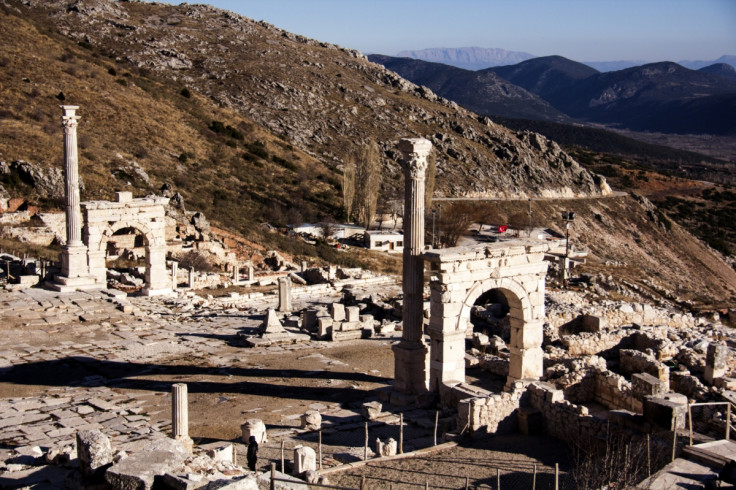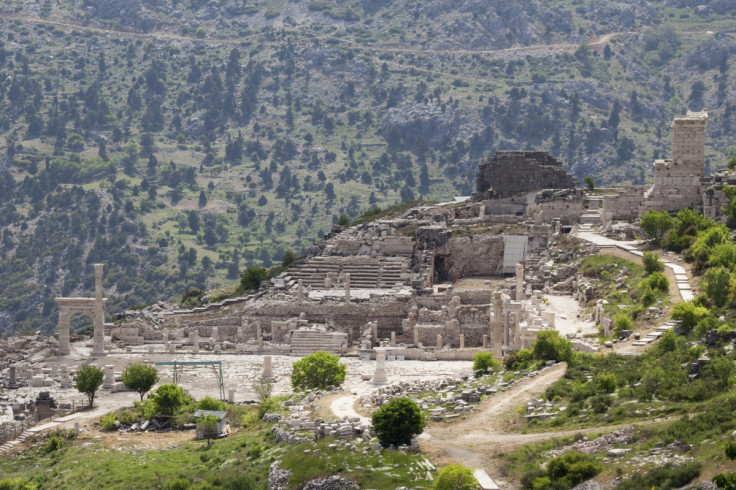Turkey: Ancient city of Sagalassos saw mystery exodus of 90% of population in 13th century

An prominent ancient Turkish city was suddenly abandoned by 90% of its population in the 13th century, leaving scientists baffled as to what could have caused this mass exodus. Previously, researchers thought the city of Sagalassos was slowly abandoned after a massive earthquake and a plague, but DNA analysis has now shown this was not the case.
Research published in the Royal Society Open Science describes the latest chapter in the continual unravelling of the history of Sagalassos. Archaeologists analysed the DNA of bones and teeth from individuals buried at Sagalassos, in the hope of identifying how the population changed over 2,000 years.
"From the genetics side, we cannot tell much about the causes that led to a population decline," said Claudio Ottoni, a researcher working on the study. "Archaeological and historical sources are key to fill the gaps and provide some ideas."
A history of Sagalassos
Sagalassos is now an archaeological site 100km north of Antalya, deep in the mountains of the Burdur Province, Turkey. It lies 1,500m above sea level – almost as elevated as the famously high-lying South African city of Johannesburg.
The town began to be populated more than 12,000 years ago, and quickly became one of the wealthiest communities in west Turkey. Following Roman invasion in 39 BC,the Antolian region's population peaked at around 12m people – about 30% more than the population of modern day London.
The town suffered a major earthquake in the year 518, reaching a magnitude of 6.0. It was also quickly ravaged by the Plague of Justinian for two years from 541. This plague killed 25 million people globally. A second earthquake just 100 years later all but wiped out the ancient town – destroying buildings and statues.
Previously, researchers believed that these combined events led to the eventual abandonment of Sagalassos in the seventh century. However, new research shows that people carried on living in the town for another half millennia, adding more mystery to the story. If the people could survive such drastic natural disasters, what was it that made them finally leave?

Investigating archaeological remains
Archaeologists investigated the DNA of bone and teeth samples from 44 individuals excavated from Sagalassos. These individuals had been dated to the first century – or the late Hellenic period – the late Roman times (fourth to fifth centuries), and early Byzantine ages (sixth to seventh centuries).
The researchers also studied comparatively modern remains from the nearby town of Ağlasun, to use as a benchmark for differences in DNA from 1,500 years ago.
DNA analysis of these remains revealed very little genetic differences, so the scientists moved on to modelling population densities and their movement.
Bayesian computational simulations showed that the population of the town survived the natural disasters. In fact, the town was populated until the year 1200, and the actual population decline fell in line with abandonment of the town.
This shows that Sagalassos was not abandoned as early as previous reports have suggested, which pinpointed its decline to the seventh century.
"Our analyses revealed no genetic discontinuity across two millennia in the region and Bayesian coalescence-based simulations indicated that a major population decline in the area coincided with the final abandonment of Sagalassos, rather than with the Plague of Justinian or the mentioned earthquake," they wrote.
Two major earthquakes and an epidemic – what was it that finally made the population leave?
Archaeologists have been left confused by the discovery, and research has been forced back to the drawing board to understand exactly what caused the population decline in the year 1200.
Jeroen Poblome, archaeologist and director of the excavation, has his own theory and believes the townspeople left to defend against either the Seljuk Empire uprising, or the Byzantines.
"My current hypothesis is one of organised population displacement in order to set up defence of the imperial borders, either on the Byzantine or on the Selcuk side," said Poblome. "The fact that within two centuries, we have sources of various thousand people living again in [the nearby town of] Ağlasun makes me think of that."
"The population reduction is too drastic and illogical, and their coming back is also not slow, but in a group," he added. "Hence, there could be some degree of organisation."
The mystery surrounding this ancient population continues, as more research is needed to discover what exactly caused the people of Sagalassos to leave.
"For more thorough considerations we would need genomic analyses to take in considerations functional genes and maybe screen selective processes," said Ottoni. "But it's not taken for granted that we would get an answer."
© Copyright IBTimes 2025. All rights reserved.






















